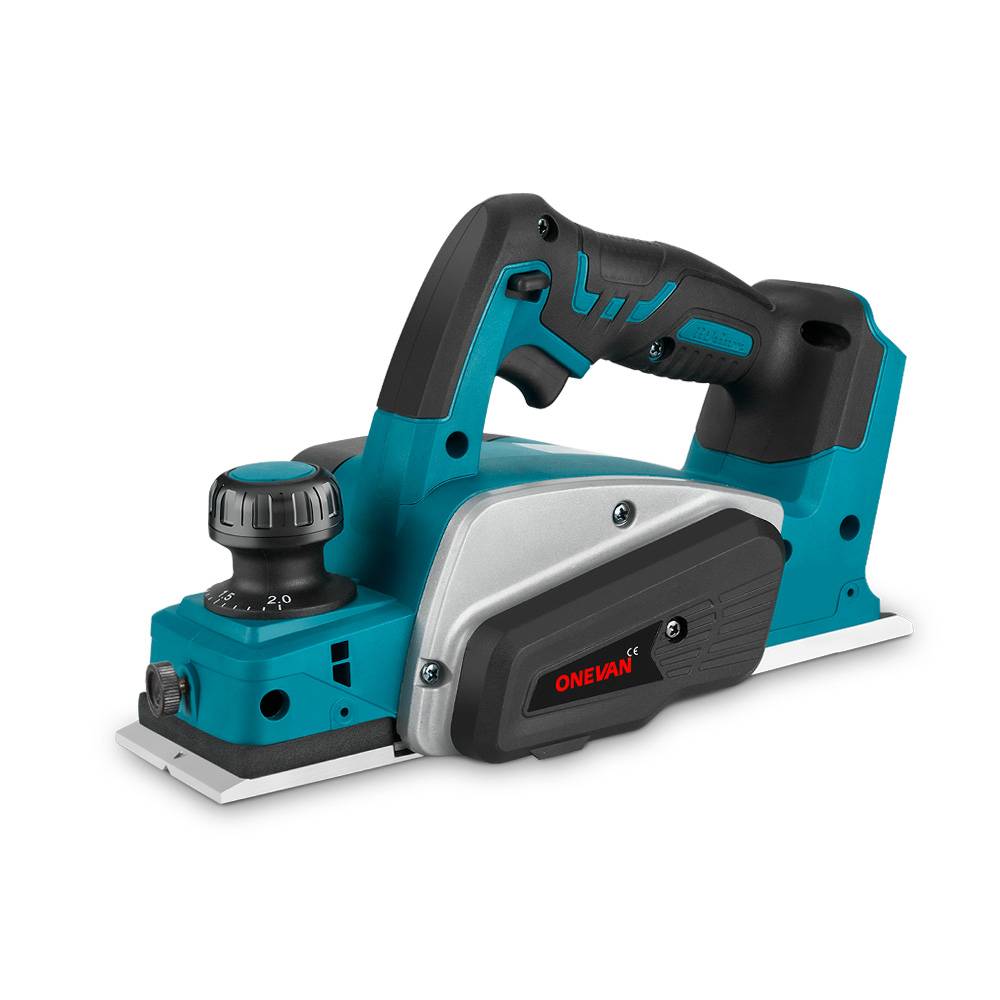It is understandable to feel intimidated when attempting to cut a perfect circle with your jigsaw. Most users are used to guiding the blade along straight paths or gentle curves. Cutting circles may seem complex, but with the right strategy, it's easier than expected. Mastery of proper technique, material knowledge, and blade selection can transform your jigsaw into a precise, circle-cutting tool.
No matter what you are working on—whether it's a custom tabletop, decorative panel, furniture, or art installation—mastering circular cuts unlocks a diverse range of design possibilities. Circles add elegance, symmetry, and a professional quality to any project, but demand precision and control for the best results. This requires selecting optimal jigsaw settings, preparing the work surface meticulously, and maintaining consistent, controlled jigsaw movements. In this guide, we will discuss all the critical information, including choosing the proper blades and add-ons, tracing your circle pattern, and deploying consistent sound chopping skills. Keep reading to know how to cut a circle with a jigsaw and how to cut a circle in plexiglass with a jigsaw.
1. Understanding the Jigsaw
What is a Jigsaw?
A jigsaw is a handheld reciprocating saw that uses a straight, narrow blade to cut a range of materials, including wood, plastic, metal, and laminate. Due to its ability to easily do both straight and curved cuts, the tool is simply unbeatable when it comes to complex tasks such as cutting circles. It features an up-and-down sawing knife that cuts through materials accurately and a thin blade, which gives it an advantage as it is easy to maneuver around curves and close angles.
Types of Jigsaws
Corded Jigsaws
The corded jigsaws offer constant power and are well-suited for long-term, continuous cutting jobs. They are more powerful than cordless jigsaws and are ideal for making cuts with thicker or tougher materials. However, the trade-off is portability; users must manage the cord while working, which can limit mobility.
Cordless Jigsaws
The cordless jigsaws, such as ONEVAN 135mm Brushless Cordless Jigsaw, are reasonably mobile and convenient. They can be used in small assignments or tasks that involve travelling in and around the workplace. Contemporary cordless jigsaws, in general, and brushless ones in particular, are very useful and have high performance, coupled with low vibration, and can therefore be used to cut precise circles.
2. Can a Jigsaw Cut Circles?
Yes, and it does so well when properly used. We should take a look at why jigsaws can be an excellent circle-cutting tool.
Flexibility
A jigsaw can cut through different materials of various forms and sizes. This can be used for both complex and straightforward cutting tasks involving circles.
Blades of Assorted Types
Blades vary widely, and you should be able to find blades suitable for the type of material you are cutting. For example, Fine-tooth blades are used with wood and metal, while special blades are used with laminates and plastics. The variety of blade options available for jigsaws ensures accurate and clean results.
Precision Cuts
A jigsaw can be used to make perfect circular cuts when the proper technique is employed or a circle-cutting jig is used. You will have better control over depth and curve with it than with many other tools available.
Convenience
The jigsaw is easy to use, as observed by most DIYers and beginners. With sufficient practice and attention to technique, it is possible to cut smooth, accurate circles.
Cost-Effectiveness
Jigsaws will be cheaper in comparison to routers or CNC machines, and they do not require such an elaborate setup.Even high-quality brands, such as ONEVAN Cordless Jigsaw, are affordable and versatile.
3. Range of Circle Sizes that a Jigsaw Can Cut
Cutting circles with a Jigsaw only needs practice and guidance. Keep reading to know how to cut a circle with a jigsaw.
Less than 2 inches (Small Circles)
Feasibility
When cutting tiny circles, a jigsaw can be challenging because the blade's size and turning radius may be too large for the task. However, with patience and a slow approach, it's possible.
Techniques
Drill a starting hole near the edge of the circle and insert the jigsaw blade into this hole to begin cutting along the tight curve. A blade with minute teeth will minimise the chances of a breakage.
Applications
Small diameters are frequently needed in cabinet making, electronic boxes and decorative work in wood.
Medium Circles (2 to 12 inches in diameter)
Feasibility
These are the optimal dimensions for using a jigsaw. With this size of circles, broad strokes of the blades can be easily followed, allowing for fine work to be done.
Techniques
A template or a circle cutting jig is best—these assist in keeping the radius constant and a smooth edge.
Applications
Widely used in cutting speaker holes, venting holes and craft projects.
Large Circles (21 to 3ft in diameter)
Feasibility
Large circles can be achieved with the right method. Select a blade that matches the material thickness and use a pivot jig for better control.
Techniques
Firm /Secure your material and make extra passes as required. Ensure that the material is securely fastened at the pivot point and guide the jigsaw steadily around the circle.
Applications
Commonly used in furniture manufacturing for applications such as round table tops, mirror frames, and garden planters.
Very Large Circles (More than 24 inches in diameter)
Feasibility
Cutting huge circles has been done, but more slowly. The size and cutting dome of the tool have to be considered.
Techniques
Use a DIY or store-bought circle jig that is mounted to the jigsaw. Work cautiously and apply even pressure during a cut.
Applications
Ideal for architecture, artistic installations and bespoke furniture.
4. Standard Materials for Jigsaw Circle Cutting
The difficulty of cutting circles with a jigsaw depends on the material. Continue reading to learn how to cut perfect circles with a jigsaw.
1. Wood
A jigsaw can be used to cut solid wood. Keep tear-out to a minimum by using a fine blade and clamping your material at all times to reduce movement.
2. Plywood
One of the best materials for a circular cut is plywood. It does, however, tend to splinter, so use a blade with a high tooth-per-inch (TPI) rating and mask the cut line with masking tape.
3. MDF (Medium-Density Fiberboard)
MDF is easy to cut, but it leaves behind large amounts of dust. Cutting MDF requires a sharp blade and effective dust extraction to manage the dust produced.
4. Acrylic and PVC or plastic
Plastics may become extremely hot and burn you or melt in the event of rapid cutting. Cut with a slow cutting speed and a fine blade to achieve clean results. A water or soap solution can be used to diminish friction.
5. Metal
Special blades of metal-cutting type can be used to cut thin aluminium or sheet metal. Take it step by step, avoiding overheating, and apply lubricant as needed.
6. Laminate
Laminate is hard and can easily chip. Masking tape will prevent damage to the surface, and a reverse-tooth blade will result in a smoother finish.
5. How to Cut a Circle with a Jigsaw
Basic Method to Cut a Circle with a Jigsaw
- Any Perfect Circle: Put a compass or a piece of string looped around a nail and sketch an ideal circle in your material.
- Drill Entry Hole: Make a hole in the circle close to the edge of the circle to fit the blade of the jigsaw.
- Push Blade In: Put the jigsaw blade into the hole.
- Follow the Line: Be slow as you move your jigsaw along the line of the circle with a steady pace and pressure.
- Finish and Sand: Remove one layer of foam to one thickness, plane it off with sandpaper or a rotary tool.
Using a Template to Cut a Circle with a Jigsaw
Make a Template: Make a pattern of the chosen circle using a cut-out of cardboard or thin wood.
Trace the Template: Follow the shape by tracing with the template on your material.
Bench: Use the jigsaw to run the outline.
Clean Edges: With a little sanding or filed edges, refine the shape.
Freehand Cutting Circle with a Jigsaw
Advanced users can cut circles with no assistance. Begin by marking your circle, make a hole in it with a drill and follow the curve at a slow pace with your hands only. It demands a slow pace and excellent control, and provides ample leeway and inventiveness in return.
6. Common Issues When Cutting a Circle with a Jigsaw
1. Inaccurate Cuts
Problem: Some punches are not within the circle.
Causes: Hurrying, poor marking, or a dull blade.
Solutions: Take it easy, use a guide, jig, and remember blade sharpness.
2. Splintering or Chipping
Problem: The fibres of wood crack along a cut.
Causes: Using the wrong blade or cutting too quickly.
Solutions: Use a thin-toothed knife, cover the surface, and cut from the back.
3. Binding Of the Blade
Problem: Blade becomes trapped between cuts.
Causes: Forcing the tool / Tight curves.
Solutions: Use the right blade for curves and apply reduced pressure.
4. Burning/Melting
Problem: material stains or changes shape.
Causes: Heat and friction.
Solutions: Slower speeds, breaks or lubrication of the blade.
5. Lack of Control
Problem: Irregular line of removal.
Reasons: Slack hold or unsteady workplace.
Solutions: Hold the material tightly, clamp it, and, where possible, use two hands.
6. Dull Blades
Problem: crude edges and unproductive cutting.
Reasons: Blade fade due to overuse.
Solutions: Change Blades periodically to get the best results.
7. Some Dust and Debris
Problem: Blind and blocked blade.
Causes: No dust extraction
Solutions: Cutting with vacuums or blowers can be done to clear the debris.
7. Conclusion
Now you must be clear about how to cut a circle in wood with a jigsaw. It is not only possible but also economic, efficient and feasible to cut circles using a jigsaw. With guidance on blade selection, templates/jigs, and technique, it is possible to produce clean and professional-looking circles in a variety of materials, including wood, plastic, and metal.
Being a skilful job like any other, knowledge of circular cuts comes with time. Begin with large circles, try with various materials, and update the tools as required. You should invest in a top-notch model such as the ONEVAN Cordless Jigsaw to achieve exceptional results. Just keep practising, and you will be given the assurance to engage in even the trickiest circular cut.
8. FAQs
Which is the kind of jigsaw blade to cut circles?
The tight curves and circles are well-suited for a fine-tooth blade or scroll blade. The higher the TPI, the smoother it is.
Can thick materials be cut in the shape of circles using a jigsaw?
Yes, but use a longer blade specifically designed for thick material and work slowly.
How big a circle can I cut with a jigsaw?
It has no strict limitation. You can cut circles larger than 48 inches in diameter with a sufficiently large jig or template.
Does a jigsaw enable me to cut any shapes and not just circles?
Absolutely! Jigsaws are ideal for handling curves, angular cuts, and even straight cuts when used with a variety of materials.
What do I do to give myself a smooth edge on cutting my circles?
Take the right blade, work at a consistent speed and sand the cutting edges.
Tags:
cut circle with jigsaw, how to cut a circle with a jigsaw, jigsaw circle cutting tips, jigsaw cutting guide, cutting round shapes with jigsaw, best jigsaw for circle cuts, jigsaw woodworking tips, perfect circle with jigsaw, woodworking circle cutting, jigsaw blade for circles, diy circle cutting with jigsaw, jigsaw tool techniques, cutting plywood circles jigsaw, accurate circle cuts jigsaw, jigsaw cutting projects









